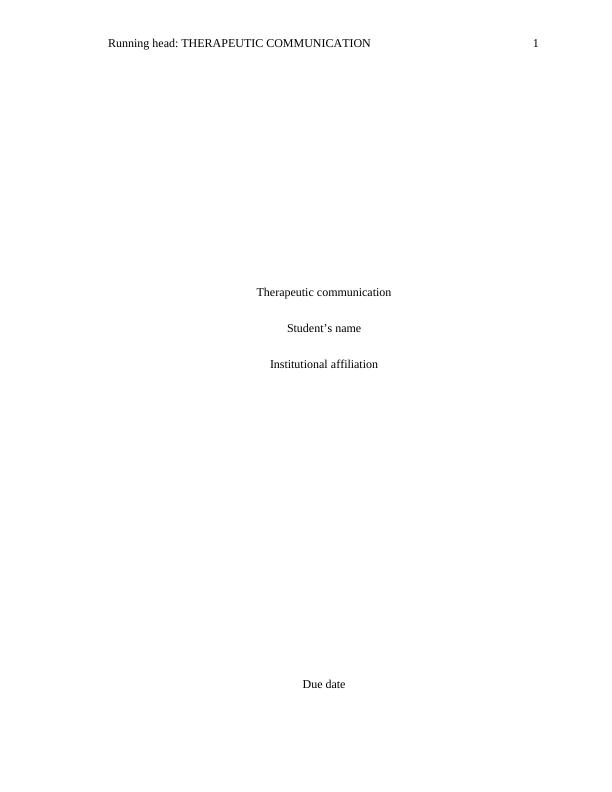Therapeutic Communication docx
Write a reflection on what you have learnt this semester relating to a specific aspect of health assessment using Gibbs Reflective Cycle as your framework.
Added on 2022-07-28
About This Document
NRSG139: Assessment Task 2 Reflection on ANSAT clinical tool Write a reflection on what you have learnt this semester relating to a specific aspect of health assessment. You need to select and reflect on ONE skill. The skills covered to date in NRSG139 are: - Hand hygiene - Therapeutic communication - Health interviewing - IPPA - Palpation of a pulse - On-line Learning You must use Relate your learning of the skill to 4 of the ANSAT tool “Comprehensively Conducts Assessment”. Use of headings as per rubric is advisable. Gibbs Reflective Cycle for Academic Reflective Piece. 1. Include an introduction 2. Use headings - the 6 steps of Gibbs Reflective Cyle to structure your paper. Include required content as per rubric and suggestions below. 3. Include a conclusion 4. Read the rubric – including the broad descriptions of each section to the left of the page and read the marking criteria for HD to PA. Make sure you include what is required. Describe:
Therapeutic Communication docx
Write a reflection on what you have learnt this semester relating to a specific aspect of health assessment using Gibbs Reflective Cycle as your framework.
Added on 2022-07-28
End of preview
Want to access all the pages? Upload your documents or become a member.



